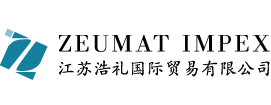In a global context marked by the reconfiguration of supply chains, Chinese cross-border B2B e-commerce is emerging as a key component in the new architecture of international trade. According to the 2025 B2B Export Development Report presented at the 137th Canton Fair, this sector is not only maintaining steady growth but also undergoing a qualitative transformation in its operational patterns and target markets.
Current Outlook and Market Projections
The Chinese cross-border B2B e-commerce sector demonstrates remarkable resilience:
- With a projected value of 6.9 trillion yuan (≈USD 960 billion) by 2025, it will account for 32% of China’s total exports.
- The compound annual growth rate (CAGR) is sustained at 12–15%, double the pace of traditional trade.
- 73% of Chinese exporting companies have integrated B2B digital platforms into their operations.
Most Dynamic Product Categories:
- Industrial Equipment (27.6%) leads growth, with strong demand for semi-automated machinery.
- Textile Sector (17.2%) is shifting toward higher value-added products, such as technical fabrics.
- Electronics (10.8%) stands out in components for IoT and smart devices.
Geographic Reconfiguration: New Growth Hubs
Established Markets:
The U.S. and EU absorb 30% of total volume, with steady demand in:
- Medical equipment
- Renewable energy components
- Light machinery
Emerging Markets:
- Southeast Asia (25% YoY growth):
- Vietnam: manufacturing equipment
- Indonesia: logistics infrastructure
- Philippines: agricultural technology
- Latin America (18% growth):
- Mexico: auto parts and electronics
- Brazil: sustainable mining equipment
- Chile: agro-industrial technology
Key Success Factors:
- Deployment of regional logistics hubs
- Preferential trade agreements (RCEP covers 30% of global GDP)
- Localized payment solutions (79% of transactions use local methods)
Technological Innovation as a Competitive Advantage
Disruptive Trends:
- Advanced Digitalization:
- Use of blockchain in customs management (40% time reduction)
- Integrated e-commerce platforms with augmented reality for virtual samples
- Productive Transition:
- Shift from consumer goods to complete industrial solutions
- 210% growth in exports of collaborative robots
- +180% in precision medical equipment
- Operational Sustainability:
- 68% of international buyers prioritize suppliers with ESG certification
- Circular economy packaging programs (35% waste reduction)
Operational and Strategic Challenges
Regulatory Barriers:
- New compliance requirements in the EU (CBAM) and U.S. (UFLPA)
- Fragmentation of technical standards in emerging markets
Adaptation Strategies:
- Advanced Localization:
- Smart warehouses in regional hubs
- Shared distribution centers
- Innovative Financing:
- Fintech solutions for cross-border payments
- Digitalized credit insurance
- Added Value:
- Localized after-sales services
- Technical training packages
Chinese cross-border B2B e-commerce is evolving into a more technologically advanced and specialized model. Success in this new phase will depend on the ability to combine digital innovation with local adaptation, sustainability, and strategic alliances in key markets. Companies that integrate smart solutions, agile supply chains, and technical value-added services will lead this new era of global trade.
Written by Wenyang Zhong
Source: mofcom

 30 de April de 2025 -
30 de April de 2025 - 